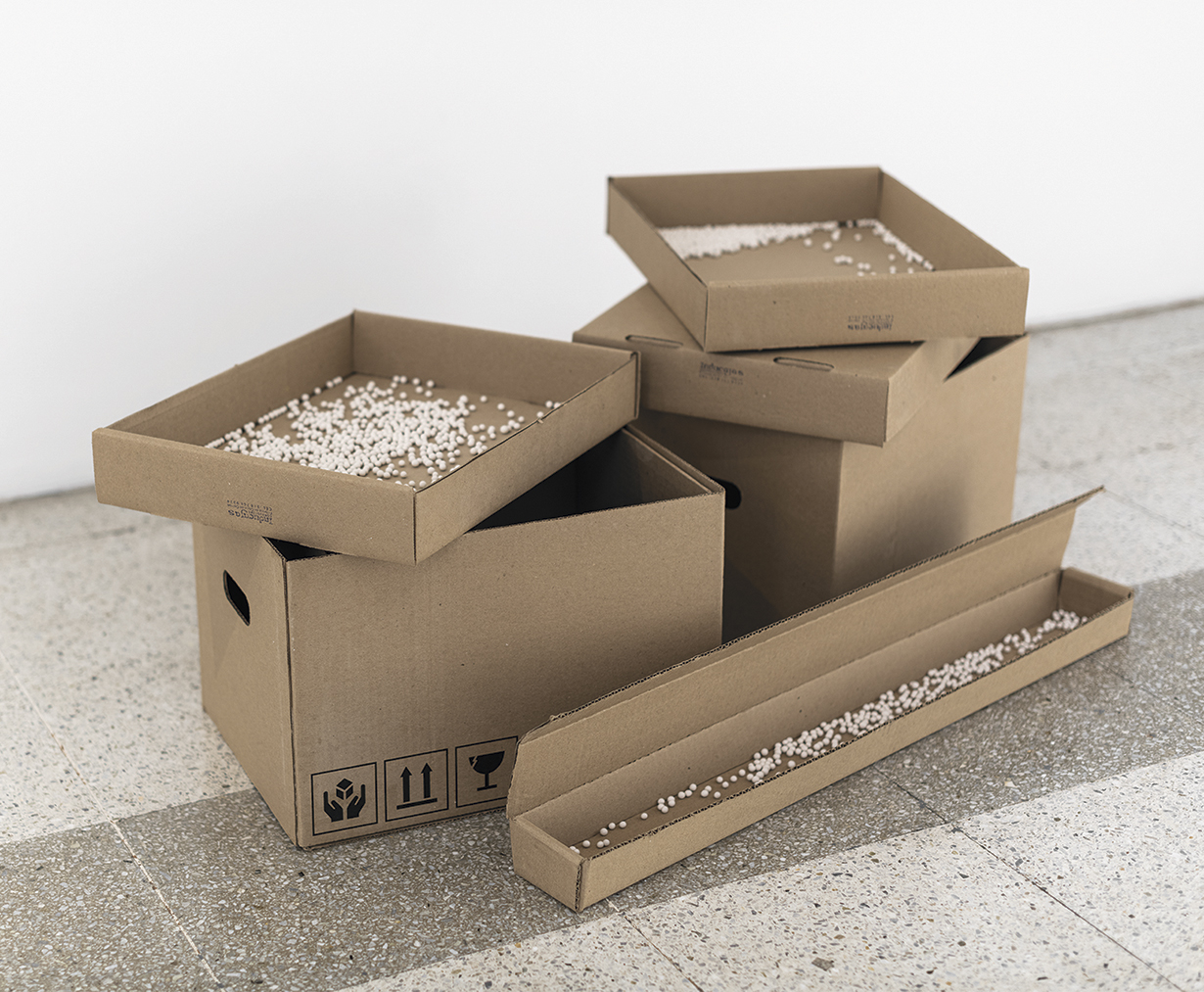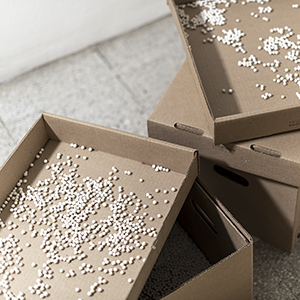
2019
Serigraph on cardboard box and 6,431 porcelain spheres
Cardboard box 40 x 31 x 28 cm
Porcelain spheres Φ 0,5 cm.

2019
Serigraph on cardboard box and 6,431 porcelain spheres
Cardboard box 40 x 31 x 28 cm
Porcelain spheresΦ 0,5 cm.




DELICADO
Serigraph on cardboard box and 6,431 porcelain spheres
Cardboard box 40 x 31 x 28 cm
Porcelain spheresΦ 0,5 cm.
THINK “OUTSIDE THE BOX”
What can be seen in the image? At first sight, it seems to be an average cardboard box the
type used for shipping and storage. The shipping symbols and marks guides (handle with
care, this way up, and fragile) are represented by globally recognized pictograms that give
the precise instructions to protect the content of the box. But let’s take a look again.
There is nothing inside the box, in fact, there’s nothing fragile nor susceptible to be handled
with care. However, from an aerial view you can see a group of white, pristine pearls that
seem to be part of the packaging of that valuable object that is not there. Also, there is
something strange about these small pearls scattered on the floor. When you touch them,
you do not feel the typical softness of crushed expanded polyethylene, on the contrary, their
smooth surface and weight give us signs of their material: ceramic.
Sonnia has forced us again to think outside the box by making the invitation to educate our
sight and mind. The work called Delicado (Fragile) proposed a pun that transcends the
reference of the art’s history (Brillo Box by Andy Warhol, for example) in order to establish
rather a Duchampian game.
By resorting to the meaning of the word delicado, which derives from the Latin delicātus, we see that there are two acceptations of this adjective that apply to the
analysis of the artwork; The first definition is breakable or easy to deteriorate; the second
one is requiring great care, caution, or tact. Undoubtedly, Delicado is more related to the
last definition as ceramic in spite of having the faculty of breaking easily, is nevertheless
one of the materials that lasts the longest in time. Delicado tells us about that scrupulous
process that the artist has carried out to elaborate 1,600 white pearls in ceramics imitating
the original material. A process that can take months.
Delicado, not only arouses admiration in the virtuosity of the artist making, but also shows
the art’s passive view as object of contemplation. Thus, the work invites us to think about
sculpture in a classic conceptual frame that is updated in the self-questionings of the artistic
technique from that trompe l'oeil of contemporary everyday objects. these have been
rebuilt using traditional techniques such as ceramics and that have been chosen on the
dynamics' work of the XXI century work.
Delicado,alludes to the globalization and the immediacy of the current trade. It emulates an
empty cardboard box whose real content has been made available to the spectator. A
content that is left to the discretion of this new public who think “outside the box”.
Andrea Rincón.